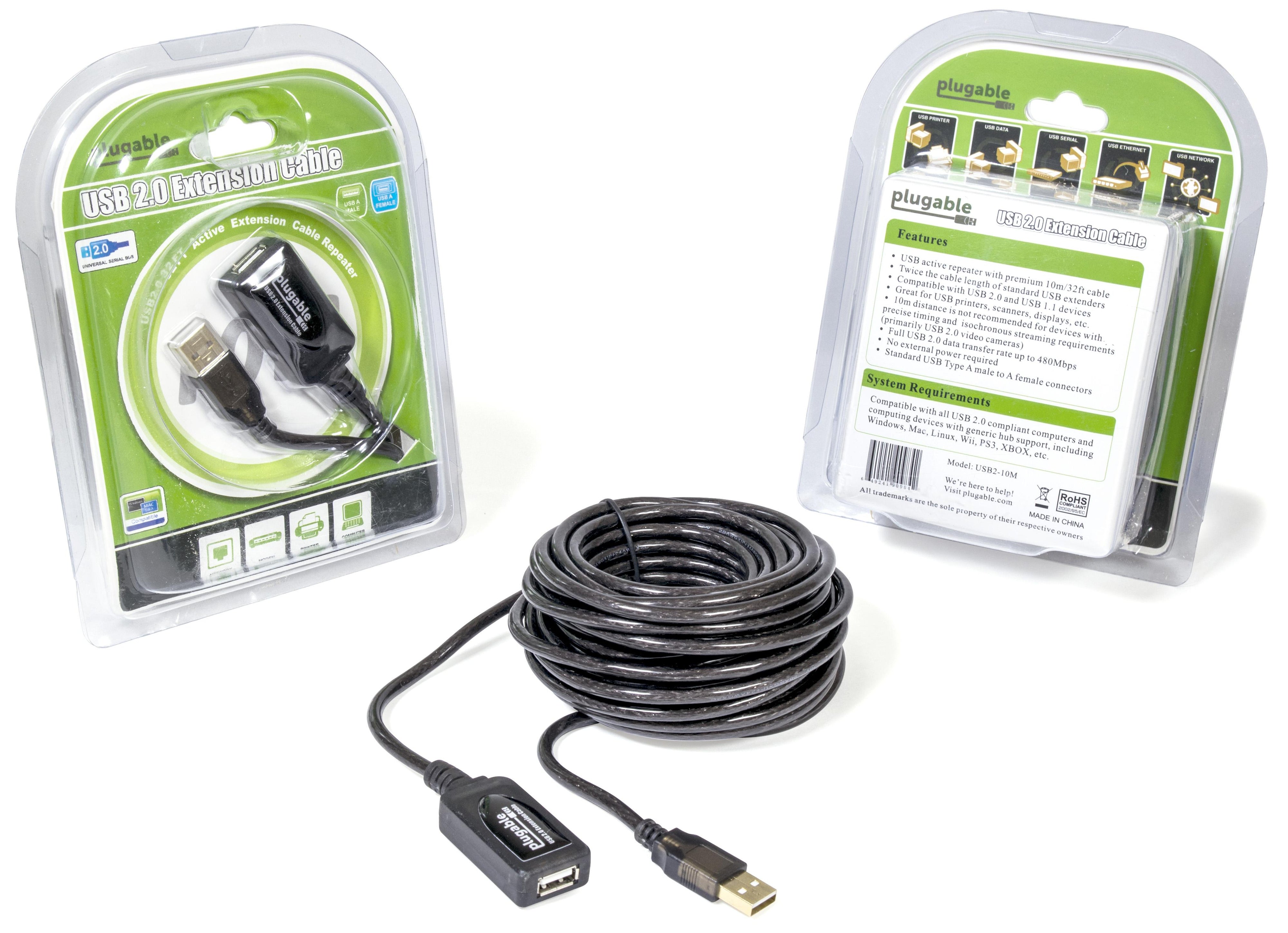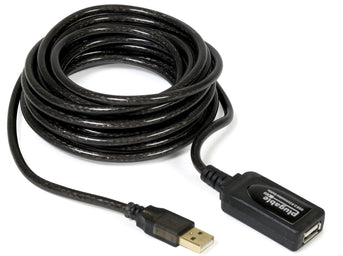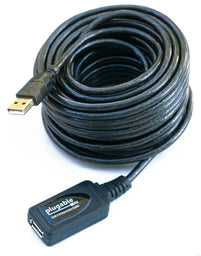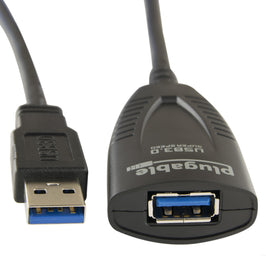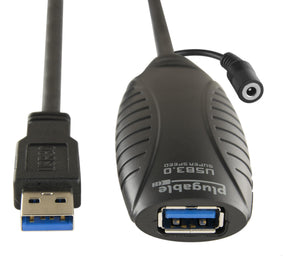








Hassle free, 2-Year Warranty
Fast, Free Shipping on Orders $35+
Lifetime Technical Support
30-Day Money Back Guarantee
Plugable USB 2.0 Active Extension Cable (10m/32′)
$24.95 USD
SKU: USB2-10MAmazon Rating : (1784 Reviews)
Features
- 10 Meter (32 Foot) USB 2.0 Extension— Extend your computing power with our 10m (32ft) USB 2.0 Active Extension Cable
- Reliable USB 2.0 Transfer Speeds— Cable provides reliable USB 2.0 transfer speeds with standard USB Type-A male to Type-A female connectors
- Premium Quality— Cable contains an active repeater and premium shielding help ensure efficient data transfer and reduce potential interference
- Wide Compatibility— Windows, Mac, Linux, gaming consoles. Connect remote USB printers, scanners, keyboard and mouse, etc.
- 2-Year Coverage, Lifetime Support— Every Plugable product, including this USB extension cable, is covered against defects for 2 years and comes with lifetime support. If you ever have questions, contact our North American-based team - even before purchase
Free 3-Day Continental U.S. Shipping on Orders Over $35!


